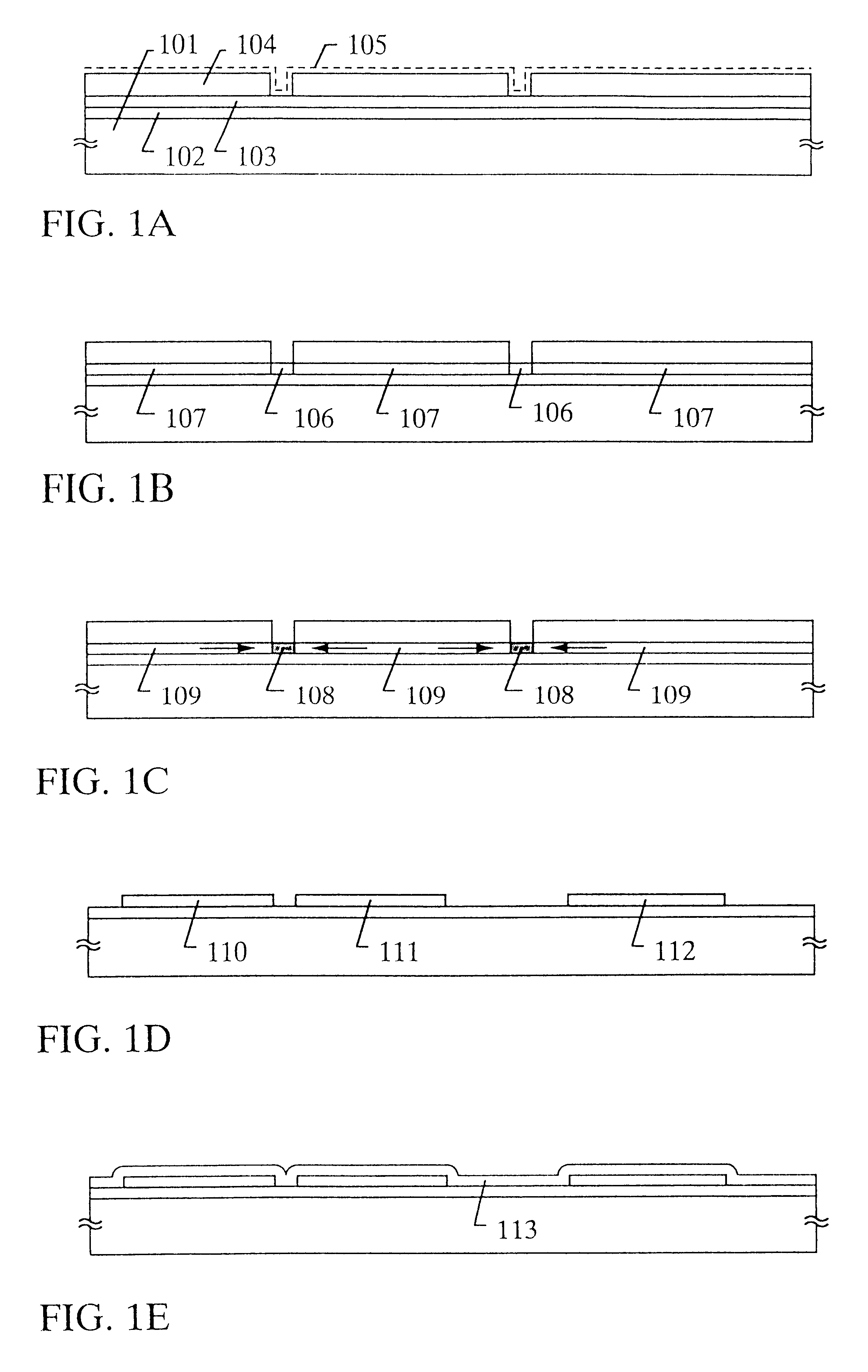Introducing catalytic and gettering elements with a single mask when manufacturing a thin film semiconductor device
a semiconductor device and catalytic element technology, applied in the direction of semiconductor devices, electrical devices, transistors, etc., can solve the problems of reproducibility and stability, the change of the characteristics of the obtained semiconductor device with the lapse of time, and the dispersion of off values
- Summary
- Abstract
- Description
- Claims
- Application Information
AI Technical Summary
Problems solved by technology
Method used
Image
Examples
embodiment 1
Incidentally, it is very effective in decreasing defects within a crystal grain to carry out the annealing step (step shown in FIG. 1E) at a temperature above the crystallizing temperature when the semiconductor thin film of the present invention is formed as in the This will be described below.
FIG. 11A is a TEM photograph showing a crystalline silicon film manufactured in accordance with the embodiment 1, magnified one million times. Defects due to lamination defects or dislocations are hardly seen in the crystal grain, and it is understood that the crystallinity is very high. This tendency can be seen in the entire of the film surface, and although it is difficult to reduce the number of defects to zero in the present circumstances, it is possible to reduce the number to substantially zero.
That is, in the crystalline silicon film shown in FIG. 11A, the defects in the crystal grain are reduced to the degree that the defects can be almost neglected, and the crystal grain boundary c...
embodiment 2
In this embodiment, an example in which a crystallizing step of an amorphous silicon film is carried out by a means different from the embodiment 1 will be described with reference to FIGS. 8A to 8E. Concretely, the example in which there is employed the means as disclosed in embodiment 1 of Japanese Patent Laid-open No. 7-130652 will be described.
First, a silicon oxide film 802 with a thickness of 200 nm is formed on a quartz substrate 801. Then an amorphous silicon film 803 with a thickness of 75 nm is formed thereon by a low pressure CVD method. A nickel acetate solution containing nickel of 10 ppm in weight is applied by a spin coating method to form a nickel containing layer 804 (FIG. 8A).
Next, after dehydrogenating is carried out at 500.degree. C. for one hour, a heat treatment is carried out at 550.degree. C. for 4 hours to form a crystalline silicon film 805. At this time, excimer laser annealing may be carried out after crystallization to crystalize remaining amorphous comp...
embodiment 3
In this embodiment, an example in which crystallized glass is used for the substrate in the embodiment 1, and an insulating silicon film formed by a low pressure CVD method is used as a protective film (serving also as an under film) for protecting the glass substrate, will be described with reference to FIG. 4.
In the case of this embodiment, crystallized glass containing ingredients of SiO.sub.2 : 52.5, Al.sub.2 O.sub.3 : 26.5, MgO: 11.9, and TiO.sub.2 : 11.4 is prepared as a substrate 401. This is nonalkaline cordierite crystallized glass using TiO.sub.2 as a nucleus forming agent.
Next, an insulating silicon film 402 capable of functioning as a protective film is formed on the front surface, rear surface, and side surface of the crystallized glass. In this embodiment, a silicon nitride oxide film is formed by a low pressure CVD method using silane (SiH.sub.4) and nitrous oxide (N.sub.2 O) as a film forming gas.
In this case, the film forming temperature is made 800 to 850.degree. C...
PUM
 Login to View More
Login to View More Abstract
Description
Claims
Application Information
 Login to View More
Login to View More - R&D
- Intellectual Property
- Life Sciences
- Materials
- Tech Scout
- Unparalleled Data Quality
- Higher Quality Content
- 60% Fewer Hallucinations
Browse by: Latest US Patents, China's latest patents, Technical Efficacy Thesaurus, Application Domain, Technology Topic, Popular Technical Reports.
© 2025 PatSnap. All rights reserved.Legal|Privacy policy|Modern Slavery Act Transparency Statement|Sitemap|About US| Contact US: help@patsnap.com



